In another measurement oriented thread I mentioned my success with measurement based rack design.... (Neo this one is for you, as requested)
One of my best empirical, measurement oriented achievements to date has been my Audio Rack.
After many months (years) of experiments with differing isolating solutions, I finally thought of measuring the vibrations.
To do this, I placed the TT needle on the TT plinth to use it as a sensor and detect parasitic vibrations, feedback and footfall.... measurement.
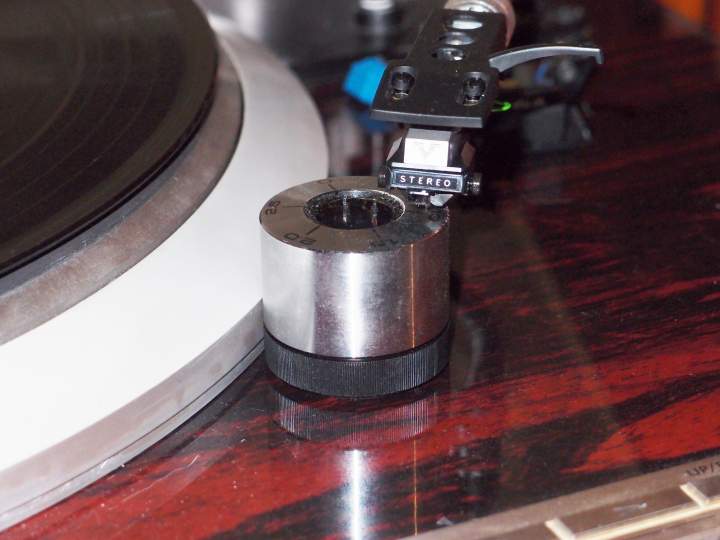
The counterweight is used to connect plinth to arm/cartridge without things getting too awkward.
Then I started varying the footers, platform an rack - I had many options, as I had been trying to resolve my isolation problem for a long time, and in the process I had purchased various platforms, sorbothane pads, sorbothane domes, rubber pucks, magnetic levitation feet, ball bearing feet, various spike feet, etc.. etc...
But the random number of possible permutations and combinations of all these different components is simply astronomical. Testing each variation by ear, requires spending an extended amount of time with each configuration (on the order of hours) - to identify differences in differing performance aspects. (tracking impact, high frequency impact, stability of piano notes, bass solidity, imaging, etc...)
Having already spent many months on the exercise with relatively minor improvements, I started measuring... once I had worked out how to measure the desired phenomenon - It then took me a few minutes per configuration to test a whole bunch of them.
Some of my measurements:

At this stage I had already placed the concrete slab and mounted it on sorbothane pads, I was still using the OEM feet on the turntable, had the lack table on spikes.
Here is a later (improved) measurement
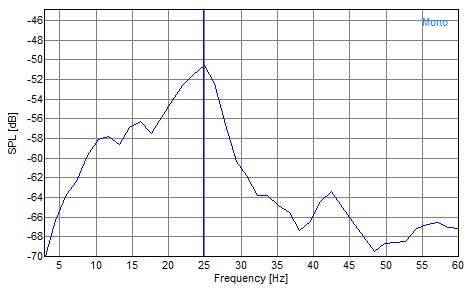
Here the main change was the removal of the OEM TT feet - replaced with small spikes, and putting a tiny dab of plasticine under the Spike cups at the bottom of the rack.
Cost of the changes - 1 set of spikes, $15
(subsequent measurements achieved further improvements... more below!)
Here is one of my worst early measurements - the peak is off the chart and was recorded at around -36db
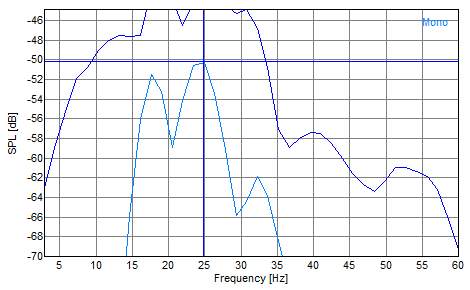
And by comparison one of my much much later starting to get there measurements:
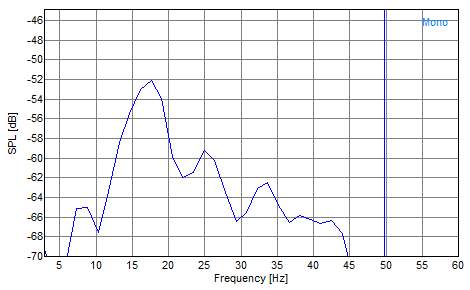
I varied each level in my setup (floor interaction/interconnection, platform to rack, turntable to platform) individually, and swapped my various options around until each was optimised before moving to the next.
The end result was that after months of playing audio roulette and never "scoring", I worked through the whole thing in a weekend, and reduced vibration impact on the turntable by over 20db.
Now I can no longer hear my partner walking around the house through the music on the turntable (!!) - but also the imaging and soundstage remains stable, and piano notes are more solid/real.
Pictures of the end result:
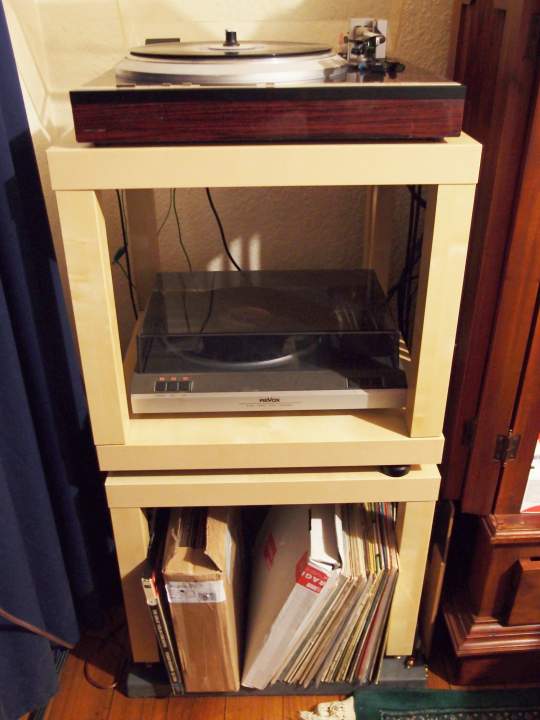
And working my way up...
At the bottom are four Sorbothane pads 2inch diameter rondels around 1/4 of an inch thick. (not visible in photos as hidden under the slab)
On top of these is a 36kg concrete slab, which I have wiped over with Danish wood oil to seal it and ensure I don't get concrete dust around the place.
Then come the spike cups on tiny dabs of plasticine (1/8 inch diameter sphere of plasticine flattened under each spike cup)- supporting an Ikea Lack table.
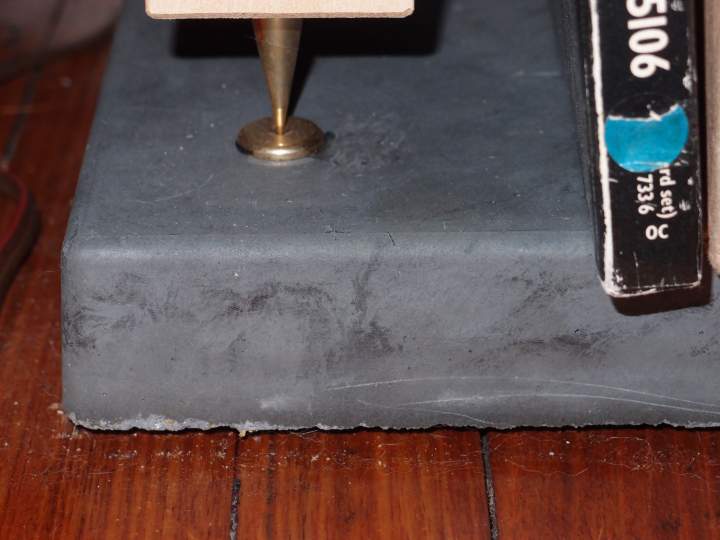
The records sitting between the legs of the rack add even more mass to the setup.
Cost of Ikea Lack Table AU$10
Cost of Spikes AU$15
Cost of Sorbothane pads AU$@25
Cost of plasticine AU$5 per 500g (negligible amount used here!)
On top of this Ikea Lack table, an Ikea Lack Tabletop (legless) is used as a platform - these are particularly good at damping mid to high frequencies - not shown here as these were not a problem area....
The Ikea Lack Tabletop sits on a set of 4 triton NeoLev Magnetic levitation feet. - These were the most expensive isolating item at around AU$200
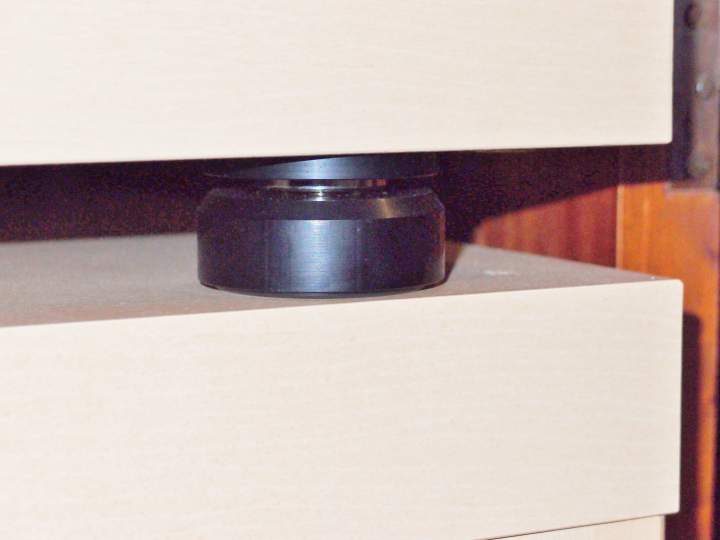
Some calculations of expected total mass sitting on these feet was required as you don't want to go over their maximum.... once they compress down completely you might as well put spikes there!
Max per foot is 8kg
I weighed the Revox TT, the JVX TT (with the additional 3kg of damping plasticine inside it!) - and my JLTI phono stage which sits immediately behind the JVC on the top level.
I was no more than 3kg off the maximum for the 4 feet at a total of 28kg calculated.. with a bit of safety margin.
The higher the mass on the mag lev feet the lower the resonant frequency... so it is important to get the mass as close to that max limit as possible.
On top of this lack tabletop platform, in addition to the Revox Turntable, sits another complete Ikea Lack Table...
This time without spikes (yes I measured it, better results were achieved with a 1/4" sphere of plasticine under each foot to both provide some friction so it does not slide on the platform, and also a small amount of damping... plasticine damps best from 300Hz upwards, so damping influence within the problem zone being measured was negligible - but the reduction in sliding appears to have affected the 5Hz to 30Hz area where I was suffering)
Now we are at the top section of the rack:
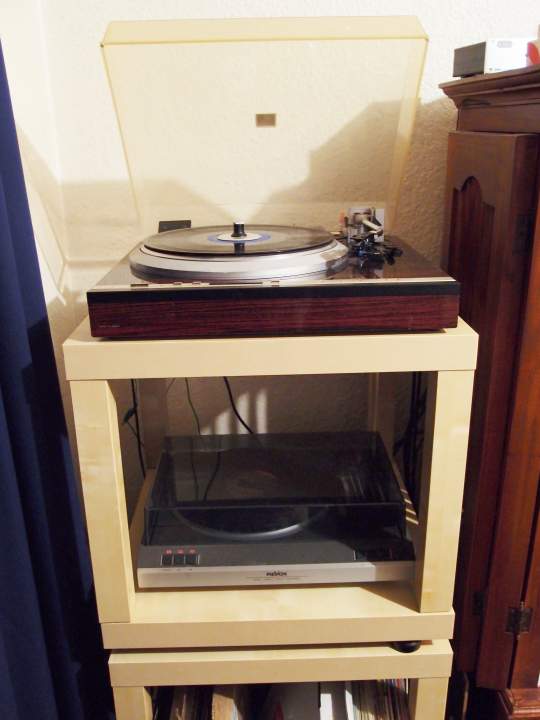
I did have the mass budget for another platform on top before the Turntable, and experimented with another lack tabletop, isolated or mounted with a range of differing feet, spikes, AS ISO9H vibration absorbers, various different sorbothane pads and sorbothane hemispheres, squash balls...
Ultimately what worked best was the removal of the OEM feet on the turntable and their replacement with AS ISO9H isolation feet...
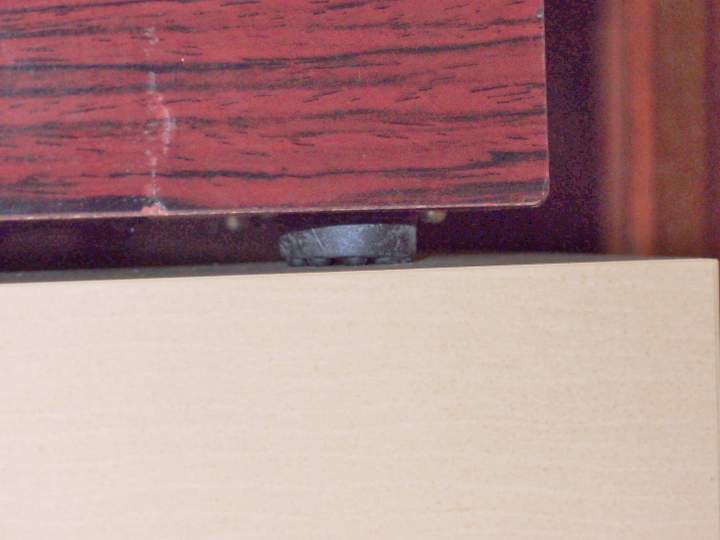
I used 4 of these feet, the first three in a triangle - 1 at back, 2 at front, and the 4th in the centre, damping and compressing the bottom baseboard under the plinth - this 4th foot made a massive difference.
These are the ISO9H feet I used:
http://www.ebay.com.au/itm/4-Isolation-Feet-Pads-PreAmps-PowerAmps-CD-Player-/130331964175?pt=UK_Sound_Vision_Speaker_Stands_Brackets&hash=item1e5863f30f#ht_601wt_1173Cost of ISO9H feet AU$12
The end result is a relatively economical rack which works well, looks decent, and has not cost an arm and a leg.
I could have saved $200 by replacing the mag lev feet with sorbothane pads - which also worked well, although not quite as well.
But in one of my previous attempts at isolation I had already purchased these - and they do do a very good job. (and they have a lot more geek cred!

)
The Ikea Lack tables are about as cheap as furniture can get, and their construction which is basically wood laminated cardboard - with multiple air pockets and partitions in the box construction method - is very effective at high frequency damping - a lightweight audio friendly construction.... and very very cheap.
One warning for those who are looking to replicate my results ....
This is a specific measured solution to the problems I was having in a specific environment.
My problem frequencies may not match your ones!
My turntables are a different mass and have differing resonances to someone elses turntable - and therefore my solution may not work in all cases - and most likely will not work as well if any of the parameters are altered.
For each foot location I tested and measured at least 5 different isolators or connectors (in the case of spikes) - so for my setup and my tested gear there were at least 3000+ possible permutations and combinations (more than that as I also had different diameters and consistencies of sorbothane domes).
Going through every combination is a task for a true masochist.... I am too lazy for that!
Instead I worked my way up from the bottom and measured the results with 5 to 10 different setups - the best one was chosen and then I moved to the next level. - It is possible that along the way, I may have missed some combination where two less than individually optimal options would in combination have resulted in a better end result. (for example if one option damped a particular frequency particularly well and another frequency less well, but the next level then picked up the other frequency...)
In the end however, some frequencies were dropped by around 20db, and others were dropped by even more...
I am very happy with the end result and not in any way tempted to attempt further improvements. My gut feeling is that short of an active vibration cancelling system such as used in microscopy, I am unlikely to achieve a lot more than what I have achieved here.
What I do recommend to anyone is that you MEASURE what is happening at the TT level - that way when you try something you can quickly and easily know what the impact is, and either accept it or reject it and try something else.
Hope this helps
bye for now
David